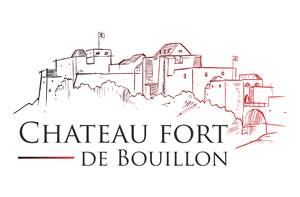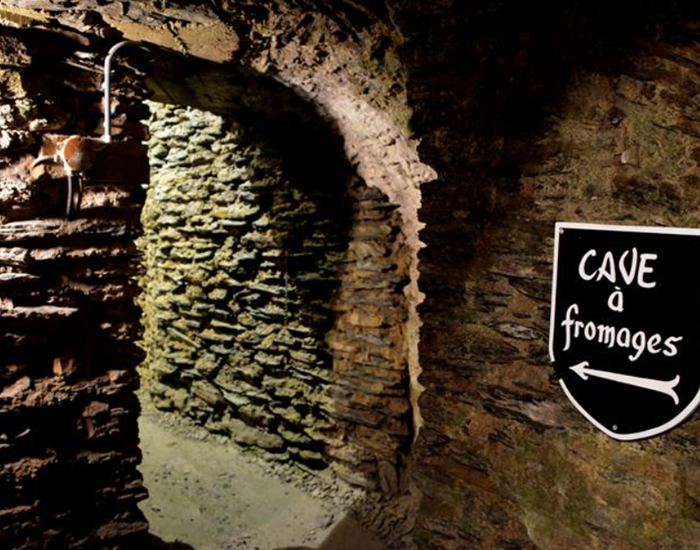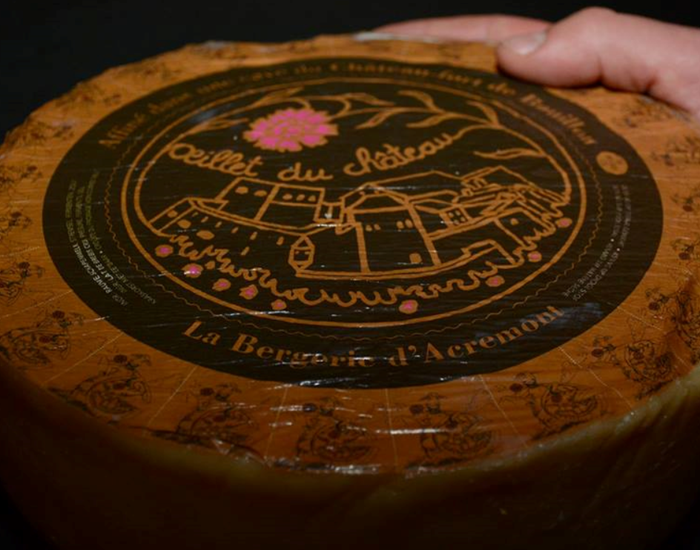
Cheese cellar
L'Oeillet, the cheese from the castle
In 2016, Peter de Cock and his wife, Barbara Vissenaekens, both shepherds from Acremont (Bertrix), set to work upon a new adventure : ripening cheese in the castle cellars. Not only are these cellars a unique place for the maturation of cheese, they are also an ideal location : since the cellars of the castle are partially carved into the rocks, they are natural cold rooms where the temperature rarely goes over 13°C, which is the recommended temperature for a quality cheese. Furthermore, the humidity rate is excellent.
Not only the cellar, but also the Belgian milk sheep providing the milk for the cheese is part of the Belgian patrimony. Nowadays, Belgian dairy sheep are an endangered species. There are only about a thousand left in the kingdom of Belgium.
A short history
For Peter, ripening cheese in one of the most important "sanctuaries" of feudalism in Belgium clearly needed to entail the use of age-old techniques. He was inspired by a medieval recipe, passed down from generation to generation. Since cheese was considered food for the poor in the Middle Ages, few medieval sources provide us with any practical information. However, after a lot of research, Peter and his wife found a recipe that has been unanimously praised by everyone.
During the Middle Ages, monks from different orders developed cheese recipes and invented maturing techniques that are still used to this day. The first farmer cheeses appeared during the 13th century when country women, looking for other sources of income, tried to get the most out of their dairy production. Soon the first cooperatives were formed to process the milk. The very first cooperative was started in 1267 in Déservilliers, France.
Peter's hard cheese is made from raw sheep milk and is produced in a copper cauldron. The sheep that produce the milk are only fed fresh grass, barley, flax, and triticale hay, and never any silage, resulting in a true quality cheese. The draining of the cheese is also based on an age-old method and consists of inserting wooden rods into the cheese wheels. It takes 40 litres of milk, warmed to 47°C, to produce one cheese wheel weighing 4kg.
During the Middle Ages, sheep were mainly reared for their wool and their milk, not for their meat. Contrary to this day and age, wool was about five times more expensive than meat.
A cheese with a legendary name
So why does the name of this cheese refer to a flower ("oeillet" means "carnation")? The name actually derives from a legend tied to the castle of Bouillon. One day, in the year 1099, Godfrey of Bouillon, who was on his death bed, gave a bag full of carnation seeds to one of his most faithful crusaders, Aloys. The seeds were originally meant to be planted by Godfrey's grave, but Godfrey had something else in mind : he asked Aloys to take the seeds to Bouillon to perk up the castle. Godfrey said that the small pink flowers would forever remind people of the wonderful yet terrible epic of the crusades. To this day, as if by magic, carnations bloom on the castle walls every year… and nowhere else.
Remarks :
The visit of the cheese cellar is included in the itinerary of the visit of the castle.
It is possible to buy this cheese at the Bergerie d'Acremont (Rue de Bernifa, n°17. 6880 Acremont) or at the butcher's shop Istace (Rue de la Maladrerie, n°21. 6830 Bouillon).






